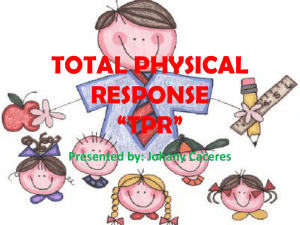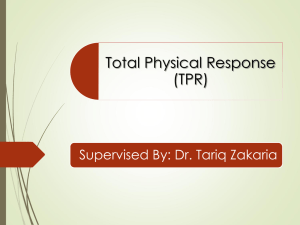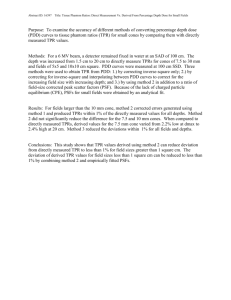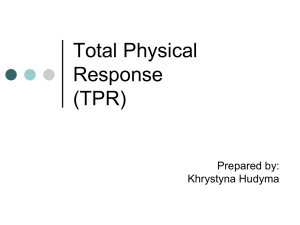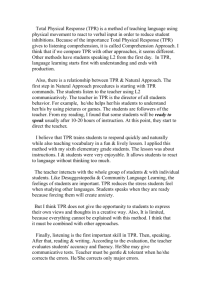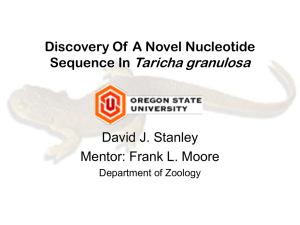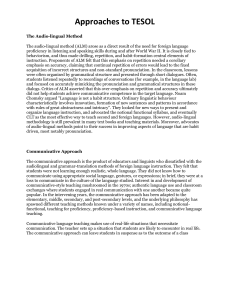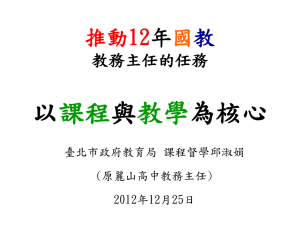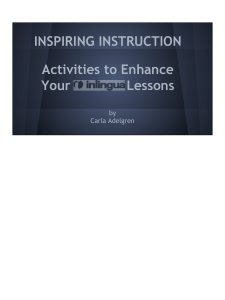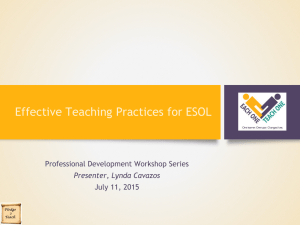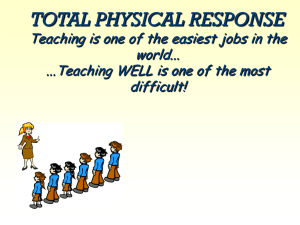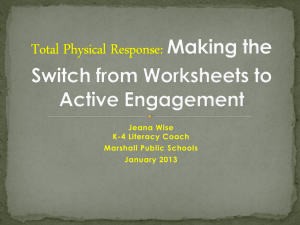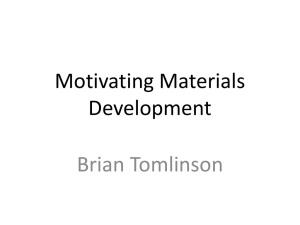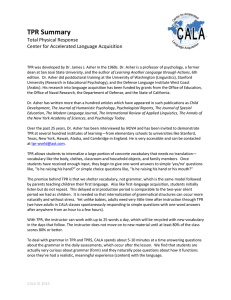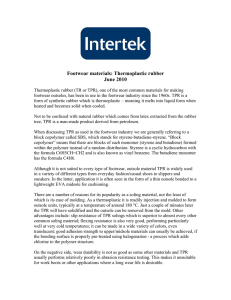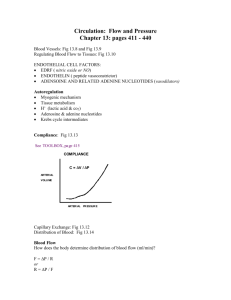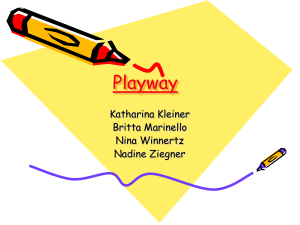PHYSICAL PHOTOSHOOT video
advertisement
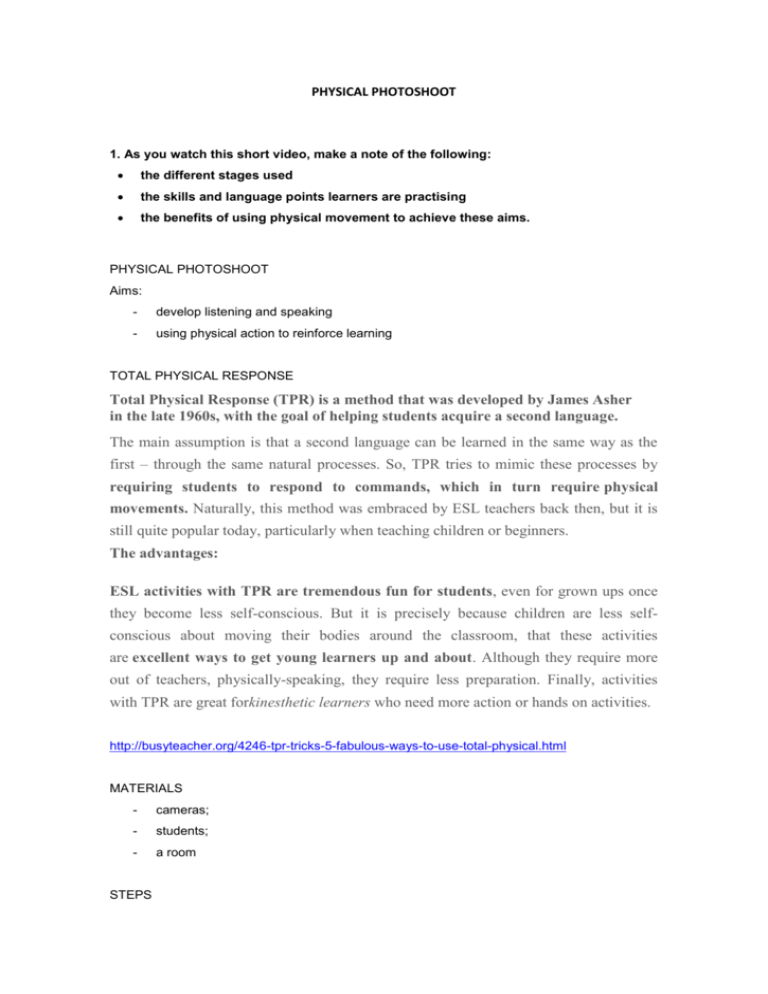
PHYSICAL PHOTOSHOOT 1. As you watch this short video, make a note of the following: the different stages used the skills and language points learners are practising the benefits of using physical movement to achieve these aims. PHYSICAL PHOTOSHOOT Aims: - develop listening and speaking - using physical action to reinforce learning TOTAL PHYSICAL RESPONSE Total Physical Response (TPR) is a method that was developed by James Asher in the late 1960s, with the goal of helping students acquire a second language. The main assumption is that a second language can be learned in the same way as the first – through the same natural processes. So, TPR tries to mimic these processes by requiring students to respond to commands, which in turn require physical movements. Naturally, this method was embraced by ESL teachers back then, but it is still quite popular today, particularly when teaching children or beginners. The advantages: ESL activities with TPR are tremendous fun for students, even for grown ups once they become less self-conscious. But it is precisely because children are less selfconscious about moving their bodies around the classroom, that these activities are excellent ways to get young learners up and about. Although they require more out of teachers, physically-speaking, they require less preparation. Finally, activities with TPR are great forkinesthetic learners who need more action or hands on activities. http://busyteacher.org/4246-tpr-tricks-5-fabulous-ways-to-use-total-physical.html MATERIALS - cameras; - students; - a room STEPS - Break students in pairs or groups; - Establish the context by eliciting with a visual image; - give each groups a camera or ask them to use their mobile phones; - check if students understood the instructions by demonstrating how to do because it can be more effective than oral explanation; - A student is designated to be the photographer that instruct the others to be in a position for the photo; - the partners listen and move according to the instructions; - then, they enjoy the photos The teacher presented the teaching points as listening and speaking, but it can be used to improve vocabulary reinforcing learning, writing skills, giving directions. Students can also compare their photographs and the teacher can ask them to describe the photos emphasizing different points such as: prepositions, location, verb tenses, etc. Other common TPR activities similar to the one presented are Simon says, Charades, Pantomime dictation, etc. This kind of activity is very beneficial because they provide opportunity for oral practice, motivate students to be active in the classroom, they use language for real purposes and they have to solve a problem. 2. Think about the language aims of the lesson you watched. Could the teacher have achieved these aims using activities suited to visual or auditory learners? If so, which ones? TPR is effective for visual students because they look at the teacher and their classmates's faces and recognize words by sight . It is also beneficial for auditorial learners because they follow their mates’ verbal instructions, it is a kind of role play and use rhythm and sound as memory aids. 2. Think about a language point you are going to teach soon. Could you try a similar TPR - Total Physical Response activity with your students? - Hide and seek the teacher hides an object inside or outside the classroom and students need to find it by following the teacher’s clues. Another possibility is to organize students in groups and one of them do the teacher’s role. 3. Can you think of any other classroom activities that use physical movement as a learning context? In English classes when students do not understand the teachers’ instructions, it is relevant to use body language to have students understand and follow the classes.
